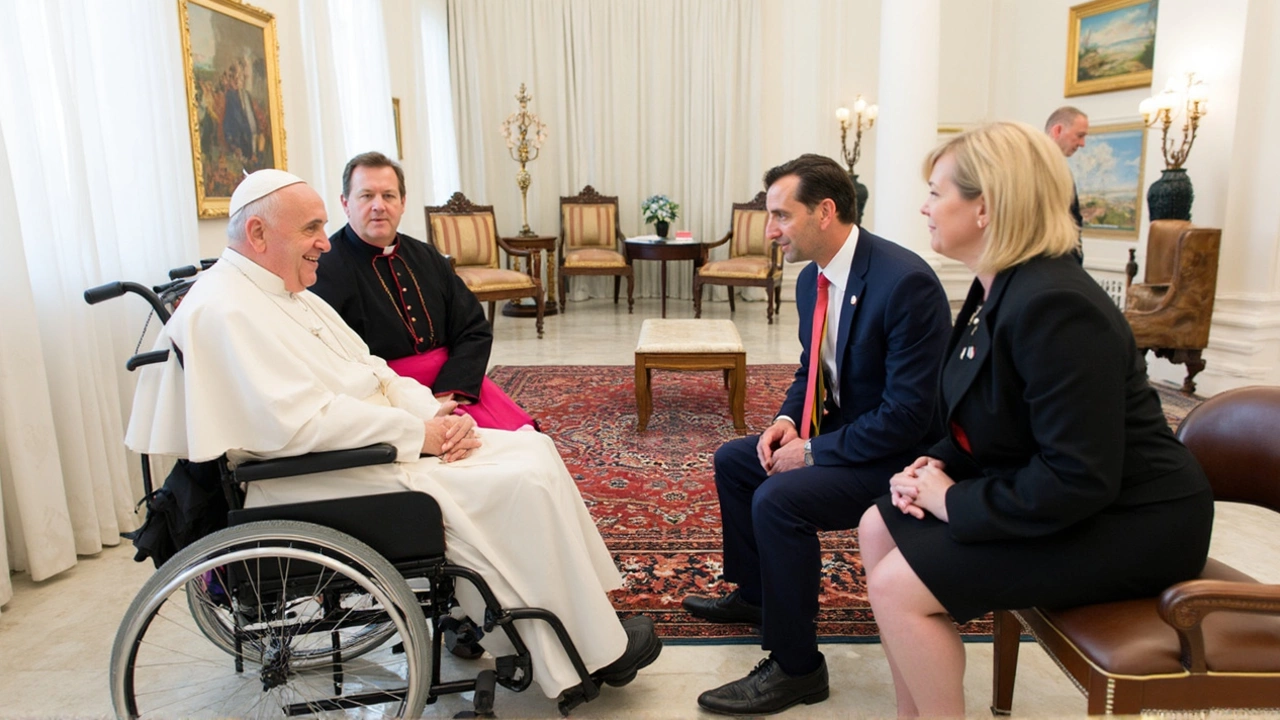Pope Francis Meets JD Vance as Vatican Hosts Tense yet Cordial Talks
It feels surreal to imagine the scene: the famously outspoken Pope Francis, frail but alert in his Vatican residence, welcomed U.S. Vice President JD Vance—just hours before the pontiff’s last breath. This brief but weighty encounter wasn’t simply a photo op. It brought together two men with a visible history of clashing views, especially on how the United States should handle its borders.
Vance, traveling with his family during an Easter break in Italy, arrived at Casa Santa Marta on April 20, 2025. His visit coincided with one of the Catholic Church’s holiest weekends. Just two days earlier, he and his wife slipped into the crowd at St. Peter’s Basilica for the somber Good Friday celebration. It was less politics, more reverence—at least for that moment.
But the core of the visit came in a private setting. Inside the Vatican’s modest guesthouse, conversations danced between faith and realpolitik. The pope, whose health had become an open secret in Rome, pressed for a renewed emphasis on religious freedom and protecting individual conscience. These weren’t empty platitudes: Over his papacy, Francis had championed the rights of migrants and refugees, at times openly challenging the hardline immigration stances favored by the Trump White House—a legacy Vance had backed and defended.
The talks didn’t stop with memories and generalities. With high-ranking Vatican officials, including Cardinal Pietro Parolin and Archbishop Paul Gallagher, joining the table, they tackled current crises head-on. The Vatican voiced concern for the brutal wars and displacements gutting fragile states, with a special emphasis on the suffering of migrants and prisoners—real people caught in policy crossfire. While there were no dramatic televised debates, the tension of old disputes was there, lingering behind polite diplomatic language.
From Personal Reflection to Sudden Loss: The Meeting’s Final Chapter
Unlike previous visits from American officials, this one carried a sense of urgency and, in hindsight, finality. Vice President Vance knew he was speaking to a man nearing the end. Afterward, he took a moment to mention the pope’s visible physical decline and pointed to a homily Francis gave during the darkest days of the COVID-19 pandemic—words that had stuck with him longer than many politicians’ entire term in office.
No one at the Vatican could have guessed how quickly events would turn. Hours after the conversation, word spread that the pontiff had died. Vance, back in his hotel, fired off a public tribute on social media, describing their talk as something he’d never forget. The world had just lost one of its most persistent voices for compassion at precisely the moment when debates over refugees, prisoners, and religious liberty are again tearing at the seams of politics and faith.
The image of Vance shaking hands with Francis, flanked by senior Vatican players, will be examined for years by analysts. Was this a simple gesture of goodwill between longtime ideological adversaries? Or did their parting words signal a possible shift—however slight—in how power brokers will balance national interest with moral obligation in a world on edge?
